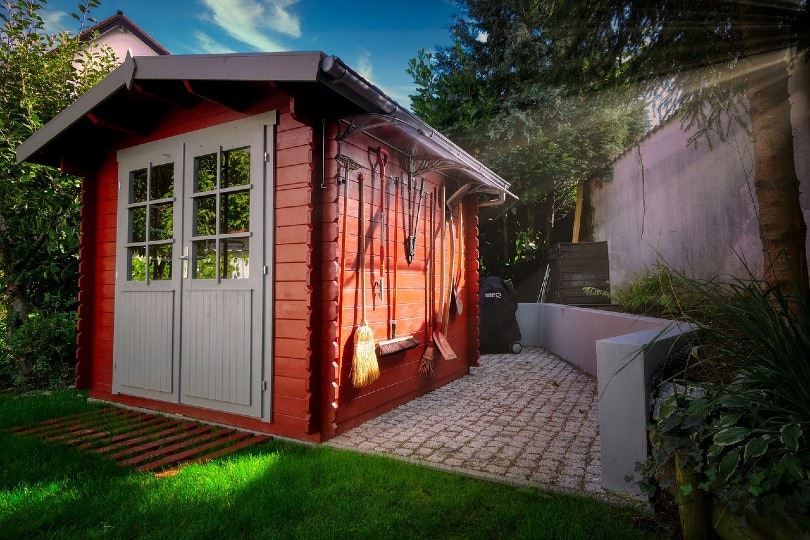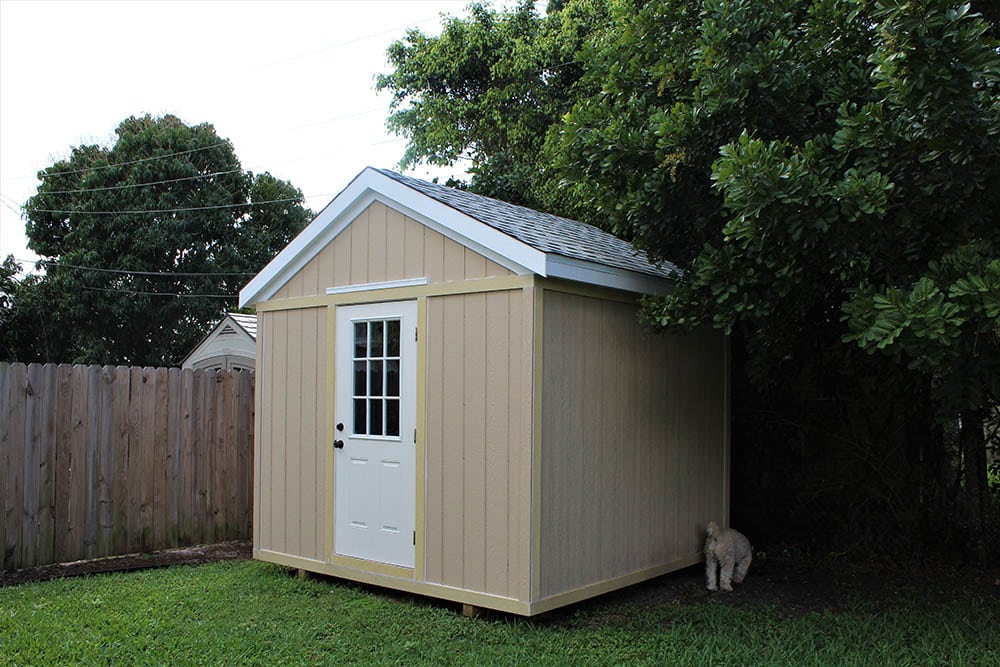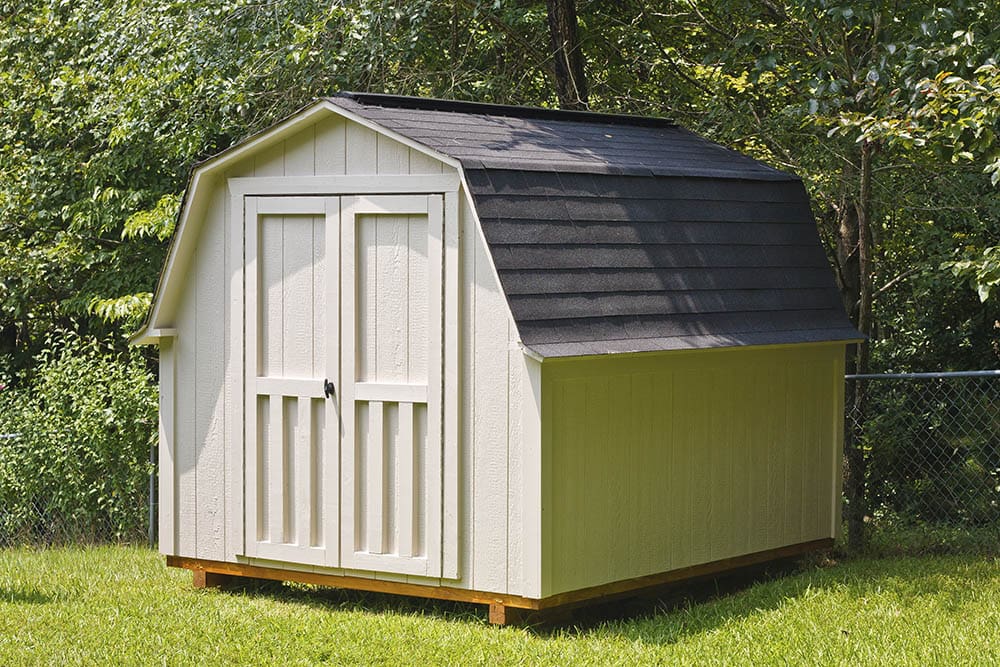What Is the Best Wood for Sheds? What You Need to Know
-

- Last updated:

As you get more involved in landscaping and other home improvement ventures, you’ll eventually need a space to stage your ever-growing arsenal of tools and materials. What better way to flex some DIY muscle and solve your storage problem at once than to build a brand-new outdoor shed?
If you aren’t going to run electricity or climate-control your shed, construction is a straightforward process. Still, that doesn’t mean there won’t be critical considerations to make, the most essential being the kind of wood you use.
Being out in the elements, the wood you select will have an enormous impact on your shed’s performance and longevity. To help you achieve the longest-lasting, most maintenance-free construction, we’ll detail the best wood for sheds.
Pressure-Treated Lumber
Pressure-treated wood is the best wood for sheds. High pressure forces chemical preservatives into the wood’s cells, making it less susceptible to water and insect damage. Using pressure-treated wood in outdoor structures that are going to be close to the soil and regularly exposed to moisture will protect them from rot, decay, and warping.
There are several different grades of pressure-treated lumber available. Some will only tolerate occasional moisture, while others can handle full submersion in water. For your outdoor shed, you likely won’t need the most heavily treated lumber, and in rare instances, you may not have to use pressure-treated wood at all. You can also enhance the protection of untreated lumber with weather-resistant sealants.

2×4 Framing
Framing lumber in standard 2×4 sizes is sufficient for nearly any shed design. Made from softwoods like spruce, fir, and pine, framing lumber creates the shed’s foundation. It extends from the support footings, forming the skeleton for the floor, walls, and ceiling.
A shed will rarely have a substantial barrier between any part of the frame and the outside elements. Therefore, it is often best to use pressure-treated framing wood throughout the construction.
Shed Sheathing
The sheathing is the external wood paneling that goes over the wood frame to form the walls. Depending on how you finish and cover them, you can select from various grades of treated wood to suit your needs and budget.
Oriented Strand Board
Oriented strand board, or OSB, is a plywood-like engineered building material made from crisscrossing scraps of wood bonded together by adhesive, heat, and pressure. Available in similar lengths and thicknesses, OSB is a cheaper alternative to plywood.
It has better shear strength than plywood, but OSB is still an inferior product in general. In an unfinished state, OSB is not only less attractive but is also more susceptible to swelling. New cuts can also create openings for moisture penetration, and since it is slow to dry, OSB has a higher potential for mold and rot.

Plywood
CDX plywood is the most common type of plywood for exterior shed walls, an economical siding option with limited moisture resistance. The “C” and “D” indicate the wood quality (“A” and “B” are the best) of the two sides of the board, while the “X” means that it is strong enough for some outdoor exposure.
The wood in CDX plywood is not rot-resistant, but the adhesive holding the layers is weatherproof to a certain extent. Since it isn’t pressure-treated, you will eventually need to cover it with siding or finish it with a urethane seal to prevent moisture damage.
T1-11 Siding
T1-11 siding is a classic choice for shed siding, a simple decorative exterior wall option that you can easily paint. It’s made from either OSB or plywood, sporting the same durability and performance features as those standard panels. The style was popular for housing construction in the 1960s and has fallen out of favor in recent decades, but it’s still an excellent economical option for outdoor sheds.
Untreated Wood
Aside from pressure-treated siding, there are many untreated kinds of wood that can work thanks to their natural rot and pest resistance.
- Western red cedar
- Redwood
- Cypress
- White oak
These woods are not only tough against the elements but also attractive. You can buy many varieties in wide sheets, or you can opt for shingles and planks to go over plywood or OSB substrates. Whichever route you take, you’re guaranteed to get an aesthetic upgrade over more inexpensive paneling options.

Conclusion
There are many practical materials for building an outdoor shed, including vinyl, metal, or composite siding. Wood is a fantastic choice, an inexpensive and easy-to-use option that can give you many years of performance when you finish it the right way.
For the best results, use pressure-treated lumber or naturally rot-resistant woods. Follow this guide for selecting wood, and you’ll have a sturdy shed to give your equipment long-lasting and reliable protection!
Featured Image Credit: fietzfotos, Pixabay
Contents


